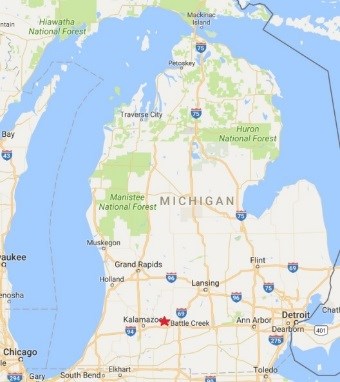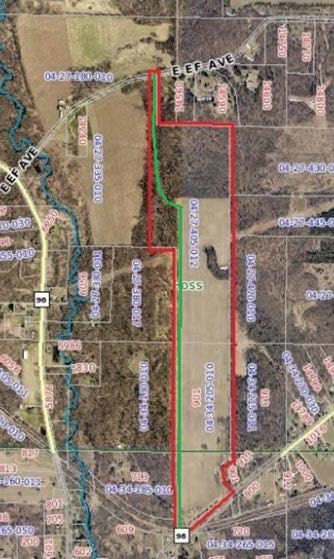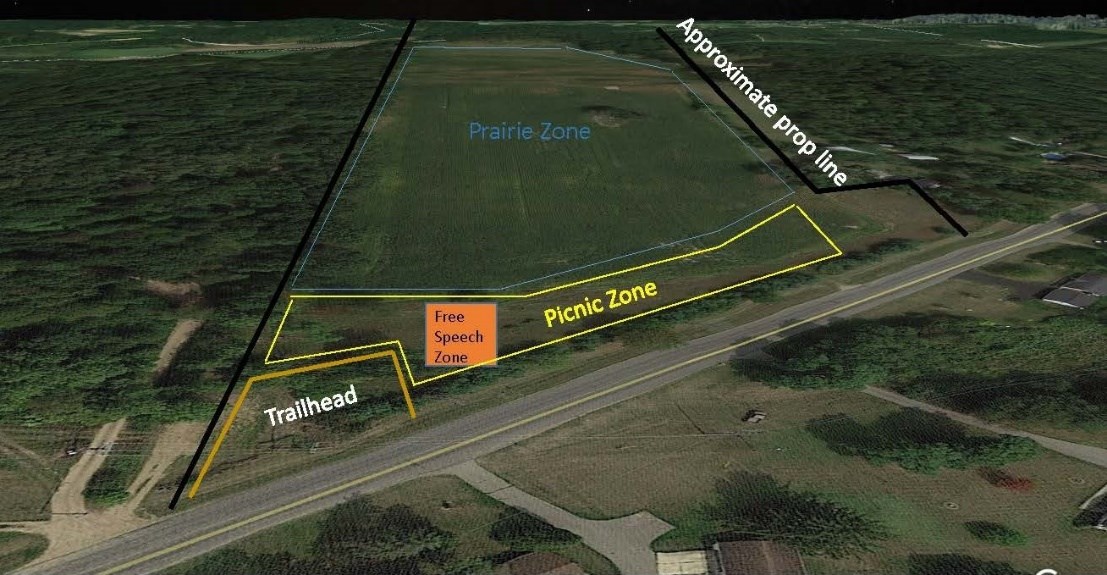
National Park Service Superintendent’s Compendium of Designations, Closures, Permit Requirements and Other Restrictions Imposed Under Discretionary AuthorityApproved: A. Introduction1. Superintendent’s Compendium DescribedThe Superintendent’s Compendium is the summary of park specific rules implemented under 36 Code of Federal Regulations (36 CFR). It serves as public notice, identifies areas closed for public use, provides a list of activities requiring either a special use permit or reservation, and elaborates on public use and resource protection regulations pertaining specifically to the administration of the park. The Superintendent’s Compendium does not repeat regulations found in 36 CFR and other United States Code and CFR Titles, which are enforced without further elaboration at the park level.The regulations contained in 36 CFR, Parts 1-7, are the basic mechanism used by the National Park Service (NPS) to preserve and protect the natural and cultural resources of the park and to protect visitors and property within the park. Parts 1 through 6 are general regulations applicable to all areas of the National Park system, and Part 7 contains special regulations specific to individual parks. Each of these Parts has many sections and subsections articulating specific provisions. Within some of these Part 1-7 sections and subsections, the Superintendent is granted discretionary authority to develop local rules to be responsive to the needs of a specific park resource or activity, park plan, program, and/or special needs of the general public. As an example, 36 CFR 1.5(a) Closures and Public Use Limits provides the Superintendent certain discretion in allowing or disallowing certain activities. The authority granted by the Section, however, requires the Superintendent to comply with the Administrative Procedures Act (6 USC Section 551), which requires public notice on actions with major impact on visitor use patterns, park resources or those that are highly controversial in nature. Another example is 36 CFR 1.6 Permits, which allows the Superintendent to require a permit for certain uses and activities in the park. This Section, however, requires that a list of activities needing a permit (and a fee schedule for the various types of permits) be maintained by the park. A final example is 36 CFR 2.1(c) (1) Preservation of Natural, Cultural and Archeological Resources, which provides the Superintendent the authority to designate certain fruits, nuts, berries or unoccupied seashells which may be gathered by hand for personal use or consumption. This activity can occur, however, only if a written determination shows that the allowed activity does not adversely affect park wildlife, the reproductive potential of a plant species, or otherwise adversely affect park resources. This Compendium should be used in conjunction with Title 36 CFR, Parts 1-7, to more fully understand the regulations governing the use and enjoyment of all the areas of the national Park System. A copy of Title 36, CFR, can be purchased from the U.S. Government Printing Office at: www.gpo.gov OR U.S. Superintendent of Documents Washington D.C 20402-0001 866-512-1800 The CFR is also available on the Internet at: www.ecfr.gov 2. Laws and Policies Allowing the Superintendent to Develop This CompendiumThe National Park Service (NPS) is granted broad statutory authority under Title 54 United States Code (U.S.C.) §100101(a) (formerly 16 U.S.C. 1a-1, “Organic Act”) to “….regulate the use of the National Park System by means and measures that conform to the fundamental purpose of the System units, which purpose is to conserve the scenery, natural and historic objects, and wild life in the System units and to provide for the enjoyment of the scenery, natural and historic objects, and wild life in such manner and by such means as will leave them unimpaired for the enjoyment of future generations.” In addition, Title 54 U.S.C. §100751(a) allows the NPS, through the Secretary of the Interior, to “prescribe such regulations as the Secretary considers necessary or proper for the use and management of System units.”In 1970, Congress amended the NPS Organic Act to clarify its intentions as to the overall mission of the NPS. Through the General Authorities Act of 1970, Congress brought all areas administered by the NPS into one National Park System and directed the NPS to manage all areas under its administration consistent with the Organic Act of 1916. In 1978, Congress amended the General Authorities Act of 1970 and reasserted System-wide the high standard of protection defined in the original Organic Act by stating “Congress further reaffirms, declares, and directs that the promotion and regulation of the various areas of the National Park System, as defined by Section 1 of this Title, shall be consistent with and founded in the purpose established by Section 1 of this Title, to the common benefit of all people of the United States.” 16 U.S.C. Section 1c defines the National Park System as”…any areas of land and water now or hereafter administered by the Secretary of the Interior through the National Park Service for park, monument, historic, parkway, recreational, or other purposes.” In addition to the above statutory authority, the Superintendent is guided by established NPS policy as found in the NPS Management Policies (2006). The Superintendent is also guided by more specific policies promulgated by the Director, National Park Service, in the form of Director’s Orders. As stated in the Management Policies, the primary responsibility of the NPS is to protect and preserve our national natural and cultural resources while providing for the enjoyment of these resources by visitor and other users, as long as use does not impair specific park resources or overall visitor experience. The appropriateness of any particular visitor use or recreational experience is resource-based and will vary from park to park; therefore, a use or activity that is appropriate in one park area may not be appropriate in another. The Superintendent is directed to analyze overall park use and determine if any particular use is appropriate. Where conflict arises between use and resource protection, where the Superintendent has a reasonable basis to believe a resource is or would become impaired, than that Superintendent is obliged to place limitations on public use. 3. Consistency of This Compendium with Applicable Federal Law and RequirementsThe Superintendent’s Compendium is not considered a significant rule requiring review by the Office of Management and Budget under Executive Order 12866. In addition, this Compendium will not have a significant economic effect on a number of small entities nor impose a significant cost on any local, state or tribal government or private organization, and therefore does not fall under the requirements of either the Regulatory Flexibility Act or the Unfunded Mandates Reform Act.The actions and requirements described in this Compendium are found to be categorically excluded from further compliance with the procedural requirements of the National Environmental Policy Act (NEPA) in Department of the Interior (DOI) Guidelines 516 DM 6 and as such, an Environmental Assessment will not be prepared. 4. Development of the Requirements of the Superintendent’s CompendiumAs outlined above, the NPS has broad authority and responsibility to determine what types of uses and activities are appropriate in any particular National Park System area. The requirements of the Superintendent’s Compendium are developed through an analysis and determination process. The decision criteria used during this process are:
5. Applicability of the CompendiumThe rules contained in this Compendium apply to all persons entering, using, visiting or otherwise present on Federally owned lands, including submerged lands, and waters administered by the NPS within the legislative boundaries of the park. This includes all waters subject to the jurisdiction of the United States, including all navigable waters.North Country National Scenic Trail defined: For the purposes of this Superintendent’s Compendium, park specific rules referenced below apply to the NPS-owned property located between EF Avenue and Augusta Drive in Augusta, Michigan. No registered address exists. Estimated addresses are 523 Augusta Drive, Augusta MI 49102 and 14200 East EF Avenue, Augusta, MI 49012. 
Other portions of the approximately 4,600 mile long North Country National Scenic Trail fall under a variety of federal, state, county, and local government ownerships, as well as private lands. Visitors are responsible for following all public use restrictions of the managing authorities on these portions of the North Country National Scenic Trail. 6. Enforcement of Compendium RequirementsNPS Law Enforcement Park Rangers enforce the requirements of the United State Code, 36 CFR, and this Superintendent’s Compendium. 
7. Penalties for Not Adhering to the Compendium RequirementsA person who violates any provision of the regulations found in 36 CFR, Parts 1-7, or provisions of this Compendium, is subject to a fine as provided by law (18 U.S.C. 3571) up to $5,000 for individuals and $10,000 for organizations, or by imprisonment not exceeding six months (18 U.S.C. 3559), or both, and shall be adjudged to pay all court costs associated with any court proceedings. You may receive a list of fines associated with any particular provision by contacting the Superintendent at the park address found below. 8. Comments on the CompendiumThe Compendium is reviewed annually and revised as necessary. The park welcomes comments about its program and activities at any time. 9. Effective Date of the Superintendent CompendiumThe Superintendent’s Compendium is effective on the approval date listed on the first page of this document, and remains in effect until revised for a period up to one year. 10. Additional InformationSome of the terms used in this Compendium may have specific meaning defined in 36 CFR 1.4 Definitions. 11. AvailabilityCopies of the Compendium are available at 318 E. Main Street, Suite K, Lowell, MI 49331. It may also be found at nps.gov/noco. B. SUPERINTENDENT'S COMPENDIUMIn accordance with regulations and the delegated authority provided in Title 36, Code of Federal Regulations (“36 CFR”), Chapter 1, Parts 1-7, authorized by Title 16 United States Code, Section 3, the following provisions apply to all lands and waters administered by the National Park Service, within the boundaries of North Country National Scenic Trail (as defined above). Unless otherwise stated, these regulatory provisions apply in addition to the requirements contained in 36 CFR, Chapter 1, Parts 1-7. I. 36 CFR §1.5 – VISITING HOURS, PUBLIC USE LIMITS, CLOSURES, AND AREA DESIGNATIONS FOR SPECIFIC USE OR ACTIVITIES(a)(1) The following visiting hours and public use limits are established for all or for the listed portions of the park, and the following closures are established for all or a portion of the park to all public use or to a certain use or activity:Visiting Hours:Day Use Only (thirty minutes prior to sunrise and 30 minutes past sunset) Public Use Limits:
Aerial map showing a property line boundary below a road. The road is at the bottom of the map with the property boundary extending in long skinny black rectangle above it. At the bottom left of the aerial map within the boundary, there is a small area denoted with an orange outline labled "Trailhead." A yellow outlined polygon that extends above this and to the left is labeled "Picnic Zone." There is an orange polygon located within the center-left of this area labeled "Free Speech Zone." Above these areas within the black rectangle is an area labled "Prairie Zone" that is denoted with a blue boundary. This area comprises about 80% of the space within the property boundary.

Closures:
Aerial map showing a property line boundary below a road. The road is at the bottom of the map with the property boundary extending in long skinny black rectangle above it. At the bottom left of the aerial map within the boundary, there is a small area denoted with an orange outline labled "Trailhead." A yellow outlined polygon that extends above this and to the left is labeled "Picnic Zone." There is an orange polygon located within the center-left of this area labeled "Free Speech Zone." Above these areas within the black rectangle is an area labled "Prairie Zone" that is denoted with a blue boundary. This area comprises about 80% of the space within the property boundary. 
(a)(2) The following areas have been designated for a specific use or activity, under the conditions and/or restrictions as noted:
|
Last updated: November 14, 2023
